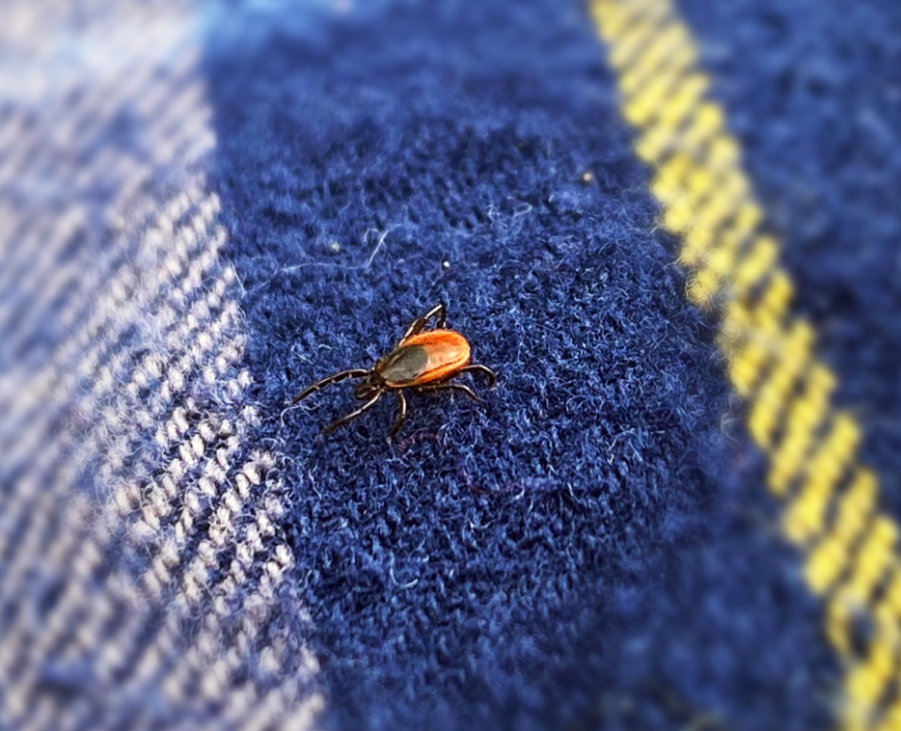While spending time outdoors has many benefits, biting bugs are always an unwelcome reality. While mosquitoes and other biting insects are most active in summer, we tend to imagine that we’re safe from pesky bites in the Fall and Winter. But what about things like ticks? I often hear people explain that the first frost kills ticks off, leaving us to enjoy our pumpkin-spiced lattes and flannel shirts in peace. But is that really true? Are ticks active in the Fall?

Let’s find out in this Naturalist Answers post!
A little about ticks
To start off, let’s brush up on ticks’ life cycle. That is, how they go about living their creepy little lives in out in nature. The hard-bodied ticks (Ixodidade) are the ones most likely to us and our pets, so I’ll focus on those in this explanation.
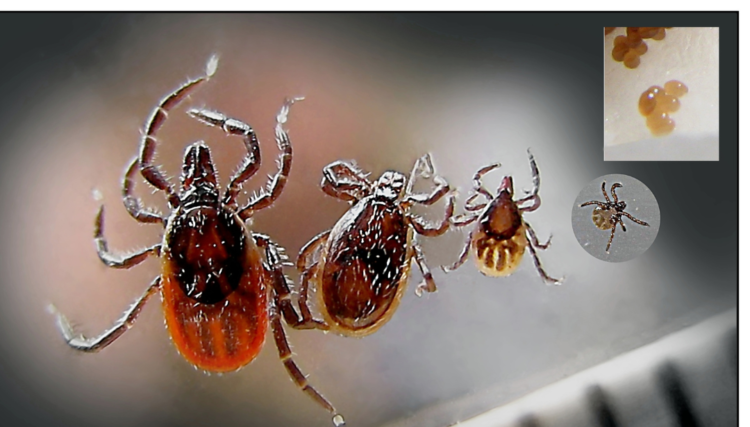
Unlike many other biting bugs that feed on blood exclusively to reproduce, ticks also feed on blood to grow up. Specifically, each time they get a blood meal, they use that nutrition to molt to a larger size, entering a more mature stage of their life cycle.
In other words, blood meals are how ticks mature to the next stage of their life cycle. Most hard-bodied ticks have four life stages:
- Egg
- Larva
- Nymph
- Adult
You can think of these life stages like less-cute versions of the ones that butterflies have. In North America, it takes most tick species about 2 years to complete their life cycle. That is, going from egg to adult and making their own eggs.
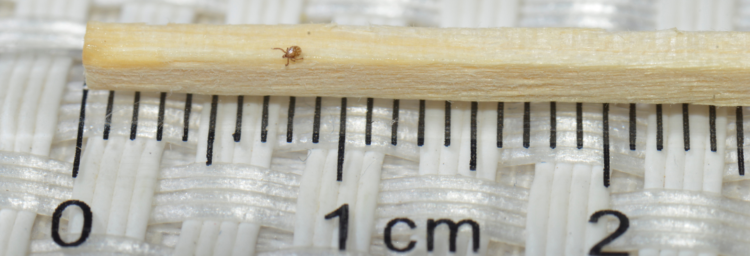
Does cold weather kill ticks?
Wait a minute—if many ticks take two years to become adults, does that mean that they survive the winter? Yes! Although many people claim that cold temperatures kill off ticks, this is absolutely a myth. Both nymph and adult ticks can and do survive winters even in cold climates.
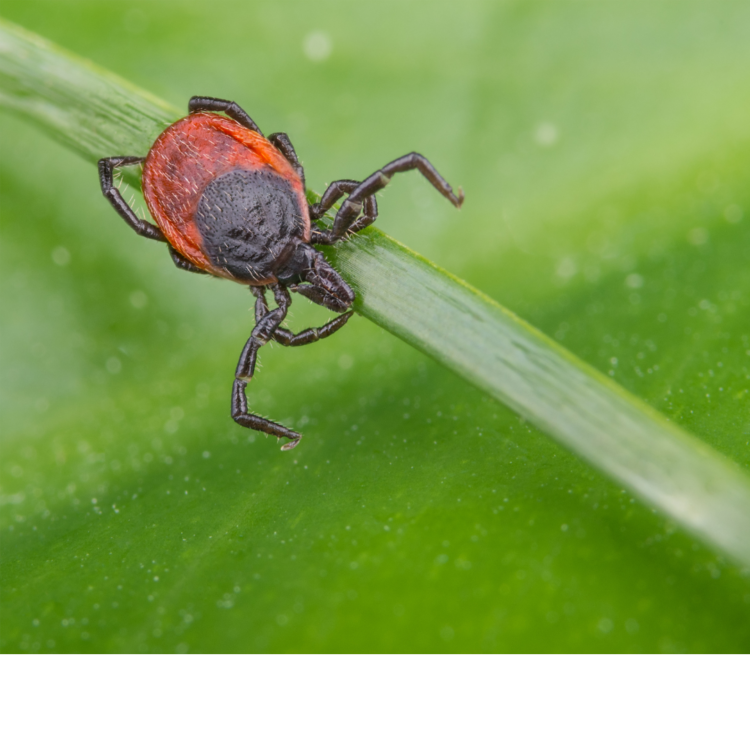
They can do this in two ways:
- By attaching to a warm-bodied host like a deer or squirrel and spending the winter on their body
- By going dormant and hiding in warm refugia like leaf litter
Temperatures need to be well below 10°F (-12°C) for days or even weeks to actually kill ticks. The fact that people often see fewer ticks in colder months has more to do with their activity and life cycle than them actually dying.
The cold can certainly slow ticks down, however. Temperatures below 45°F (7°C) will often cause them to go dormant for the winter. However, warmer days, even in late Fall and mid-winter, can perk them right back up again!
Are ticks active in the Fall? It depends
Whether or not ticks are active in the Fall depends on the timing of different parts of their life cycle. Different species of ticks do different things at different times of year. The most common ticks in Eastern North America are:
- Lone-star or turkey ticks (Amblyomma americanum)
- Black-legged or deer ticks (Ixodes scapularis)
- Dog ticks, AKA wood ticks (Dermacentor variabilis)
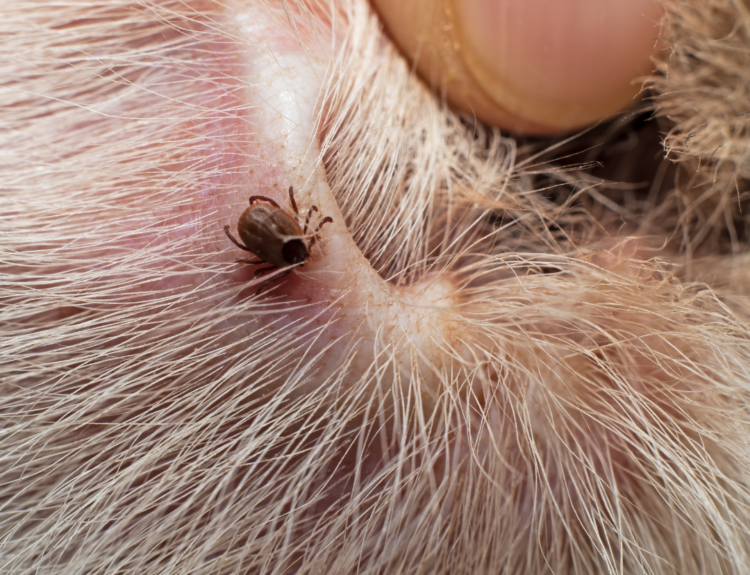
Come Autumn, lone-star and dog ticks start to become much less active, and are hunkering down for winter. By contrast, black-legged or deer ticks are entering their most active phase of feeding. It’s around this time that ticks that hatched in Spring of the previous year are finally reaching adulthood. And that means one thing: breeding.
Deer ticks in the Fall
When deer ticks reach adulthood, their goal is to get one last blood meal, mate, and produce the eggs that will make the next generation. To get all of this done before the Winter really slows them down, deer ticks get very active in Fall months. Additionally, since these ticks are adults, they are much larger than nymphs and larvae. This means that people are much more likely to notice them on their clothes or on pets.
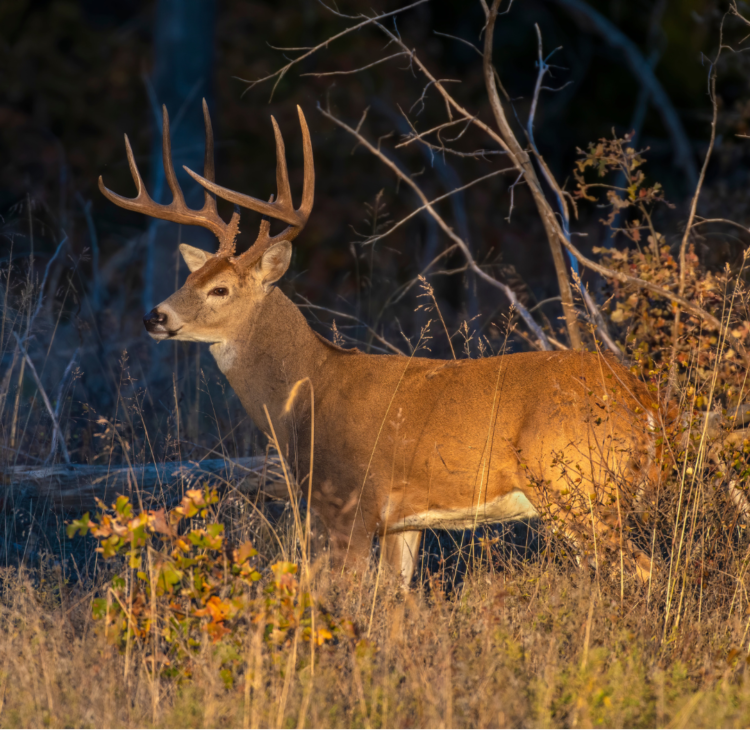
Deer ticks get their name because deer are by far their preferred hosts as adults. Fall is the rutting (or breeding) season for deer as well, so they are also extremely active at that time. This means that hitchhiking deer ticks are all over the woods. This makes them more likely to get dropped where you or your pets might pick them up.
While tick nymphs and larvae often hang out in forest leaflitter or lower vegetation, adults climb higher to get a hold of deer. In a behavior called questing, they climb a yard (~1m) or more up into tall vegetation and wait with limbs outstretched to grab anything that brushes past them.
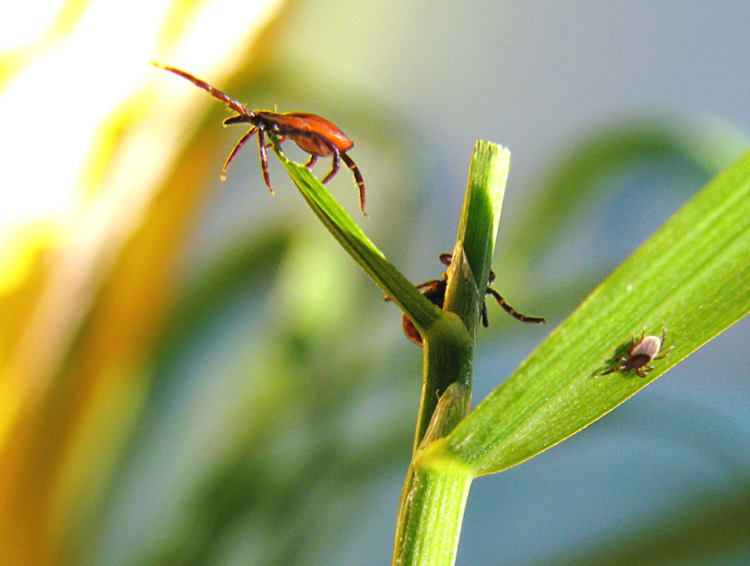
Deer ticks and Lyme disease
Deer ticks are certainly the smallest of the common American tick species. However, that doesn’t mean that they are less of a threat. In fact, deer ticks are the main vector of Lyme disease, a dangerous illness caused by a species of bacteria called Borrelia burgdorferi.
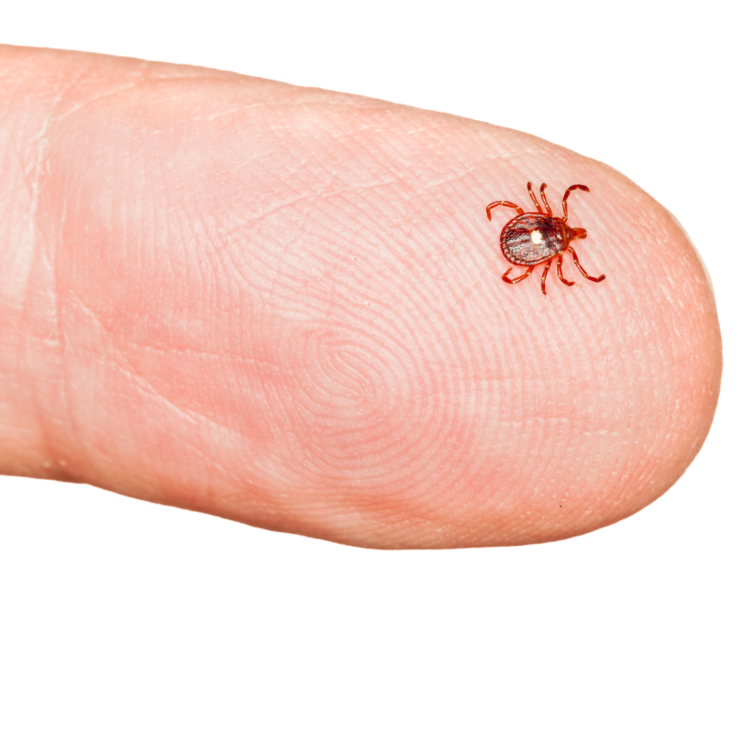
Fortunately, adult ticks are less likely to carry and transmit Lyme disease. Instead, nymphs, which are numerous and active in summer, are the ones to look out for. Thus, while deer ticks are a threat and are very active in Fall, they are less likely to carry this disease. Nonetheless, it is worth taking precautions when you go for your leaf-crunching Autumn nature walk.
Preventing bites when ticks are active in Fall
Here are some quick tips for avoiding bites while ticks are active in the Fall:
- Wear layers! Every additional bit of clothing between you and the tick means it will take them longer to find a place to bite. This gives you more time to notice and remove them beforehand.
- Wear light-colored clothing so that ticks show up clearly.
- Tuck your pants into your socks. It looks delightfully nerdy and will make it harder for ticks to get to your skin.
- Apply a mild pesticide like pyrethrin or picaridin to your clothing before you go out.
- When you get home, toss your clothes in the drier on high for at least an hour to kill any ticks that may have hitchhiked home with you.
- Carefully check your own body and that of any pets or children.
Thanks for reading!
Thanks for reading about tick activity in the Fall! Please let me know what you think in the comments. As always, if you have other questions you’d like answered in Gulo in Nature, shoot me a message using the Contact page!

